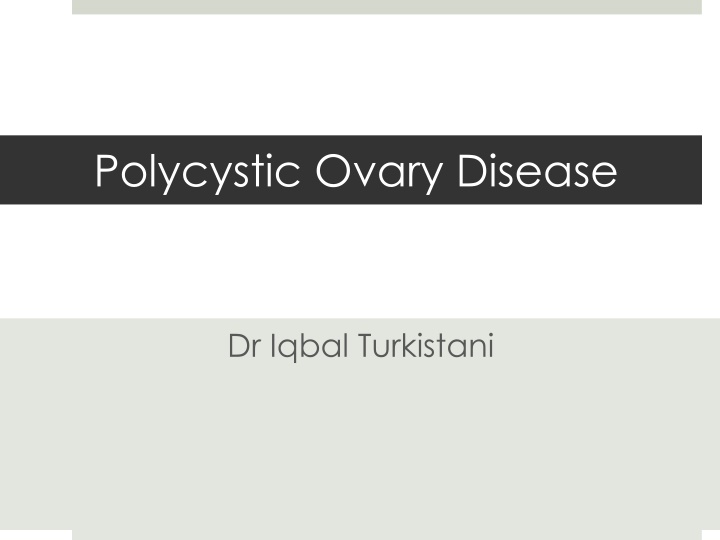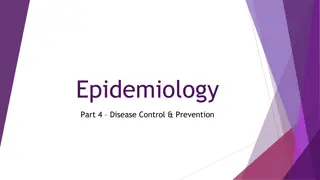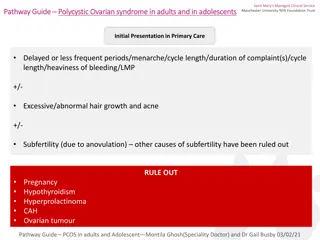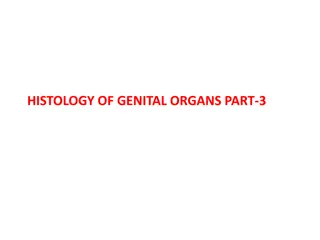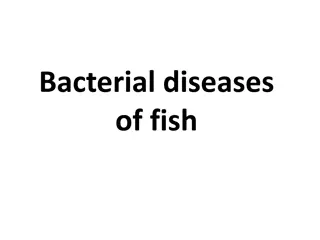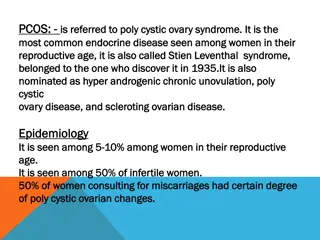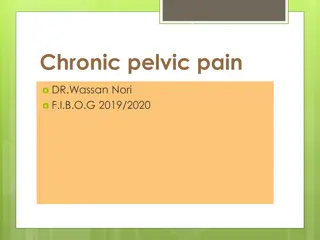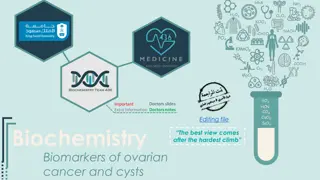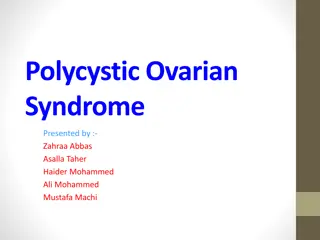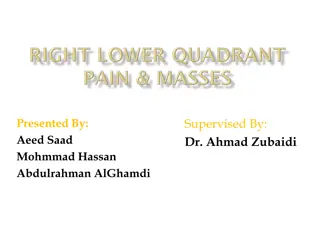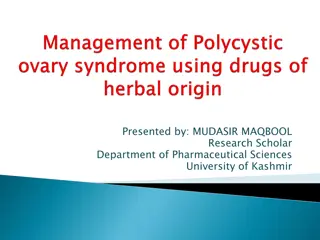Polycystic Ovary Disease
Polycystic ovary disease, also known as PCOS, is a common endocrine disorder in women characterized by elevated androgens. This syndrome can lead to various health hazards such as poor fertility and metabolic issues. The pathogenesis of PCOS involves abnormalities in androgen and estrogen metabolism, insulin resistance, and genetic factors. Proper diagnosis through specific investigations is crucial for effective management and treatment options.
Download Presentation

Please find below an Image/Link to download the presentation.
The content on the website is provided AS IS for your information and personal use only. It may not be sold, licensed, or shared on other websites without obtaining consent from the author.If you encounter any issues during the download, it is possible that the publisher has removed the file from their server.
You are allowed to download the files provided on this website for personal or commercial use, subject to the condition that they are used lawfully. All files are the property of their respective owners.
The content on the website is provided AS IS for your information and personal use only. It may not be sold, licensed, or shared on other websites without obtaining consent from the author.
E N D
Presentation Transcript
Polycystic Ovary Disease Dr Iqbal Turkistani
Objectives Describe the Pathogenesis of PCO Identify the clinical picture of PCO List the investigations required to diagnose PCO List the health hazards associated with PCO Describe the management options to treat PCO
PCOS PCOS= Polycystic ovarian syndrome It is a set of symptoms due to elevated Androgens in women. It is due to a combination of genetic and environmental factors. It is the most common endocrine disorder amongst women between 18-44 years old. It affects approx. 2%-20% of this age group. It is one of the leading causes of poor fertility.
PCOS - Pathophysiology Women with PCOS have abnormalities in the metabolism of androgens and estrogen and in the control of androgen production. Although the exact etiopathophysiology of PCOS is unclear, it can result from abnormal function of the hypothalamic- pituitary-ovarian (HPO) axis. The biochemical features of PCOS: 1. Raised androgen production such as such as testesterone, androstenedione, and dehydroepiandrosterone sulfate (DHEA-S) may be encountered in these patients. 2. However, individual variation is considerable, and a particular patient might have normal androgen levels.
3. Peripheral insulin resistance and hyperinsulinemia, and obesity amplifies the degree of both abnormalities. 4. Proposed mechanism for anovulation and elevated androgen level is due to increased level of luteinizing hormone (LH) secreted by the interior pituitary simulations of the ovarian theca cells increase androgen production (testosterone,androstenedione) Decreased level of follic-stimulating hormone (FSH) relative to LH lack of aromatization of androgens to estrogens decreased estrogen levels and hence anovulation
5. Polycystic ovaries are enlarged bilaterally,,have smooth thickened capsule. On cut section, subcapsular follicles in various stages of atresia are seen at the periphary, with hyperplasia of theca stromal cells. On microscopic examination, luteinized theca cells are seen. 6. PCOS is a genetically heterogeneuos syndrome, however the genetic contributions remain incompletely described. Studies of family members with PCOS indicate that an autosomal dominant mode of inheritance occurs for many families with the disease.
Signs and symptoms Menstrual dysfunction (amenorrhea, oligomenorrhea, menorrhagia) Anovulation Signs of hyperandrogenism (Hirsutism, acne, hair fall) Infertility Obesity and metabolic syndrome Obstructive and sleep apnea
Diagnosis On examination, findings in women with PCOS: 1. Virilizing signs 2. Acanthosis nigricans 3. Hypertension 4. Enlarged ovaries (may or may not be present)
Testing/Investigations Exclude other disorders that can result in menstrual irregularities and hyperandrogenism: Adrenal tumors Ovarian tumors Thyroid dysfunction Congenital adrenal hyperplasia Hyperprolactinemia Acromegaly Cushing syndrome
Dx Screening labs studies for PCOS: Thyroid function tests (TSH, free thyroxine) Serum procactin level Total and free testosterone levels Free androgen index Serum hCG level Cosyntropin stimulation test Serum 17-hydroxyprogesterone (17-OHPG) level Urinary free cortisol (UFC) and creatinine levels Low-dose dexamethasone suppression test Serum insulin-like growth facto
Other tests: Androstenedione level FSH and LH levels GnRH stimulation levels Glucose level Insulin level Lipid level
Imaging tests: Ovarian ultrasonography, preferably using transvaginal approach Pelvic CT scan or MRI to visualize the adrenals and ovaries
Procedures Ovarian biopsy for histologic confirmation of PCOS Ultrasonographic diagnosis of PCOS Endometrial biopsy to evaluate for endometrial disease (malignancy)
Health hazards/Prognosis Increased risk for cardiovascular and cerebrovascular disease Elevated serum lipoprotein levels similar to those of men Approx. 40% of patients with PCOS have insulin resistance hence increased risk of type 2 diabetes and cardiovascular complications. Increased risk for endometrial hperplasia and carcinoma (chronic anovulation in PCOS leads to constant endometrial stimulation with estrogen without progesterone, and this increases the risk of endometrial hyperplasia and carcinoma)
Management of PCOS 1. Life style modifications= first-line treatment Diet Exercise Weight loss
2. Pharmacotherapy =treat metabolic derangments (anovulation, hirsutism, and menstrual irregularities) First-line medical therapy is oral contraceptive pills induce regular menses (eg ethinyl estradiol, medroxyprogesterone Androgen blocking agent (eg spironolactone, leuprolide, finasteride) treat hirsutism Clomiphene citrate or letrozole =selective estrogen receptor modulators for ovulation induction, as a first- line treatment Hypoglycemic agents (metformin, insulin)
Topical hair-removal agents (eg eflornithine) Topical acne agents (eg benzoyl peroxide, tretinoin topical cream (0.02-0.1%)/gel (0.01- 0.1%)/solution (0.05%))
3. Surgery =aim to restore ovulation Method Laproscopically: Electrocautery Laser drilling Multiple biopsy
Epidemiology In USA, prevalence is 4-12%. Up to 10% of women are diagnosed with PCO during gynaecologic visits. Some European studies reported that prevalence of 6.5-8% In a study that assessed hirsutism in southern Chinese women, investigators found a prevalence of 10.5%
